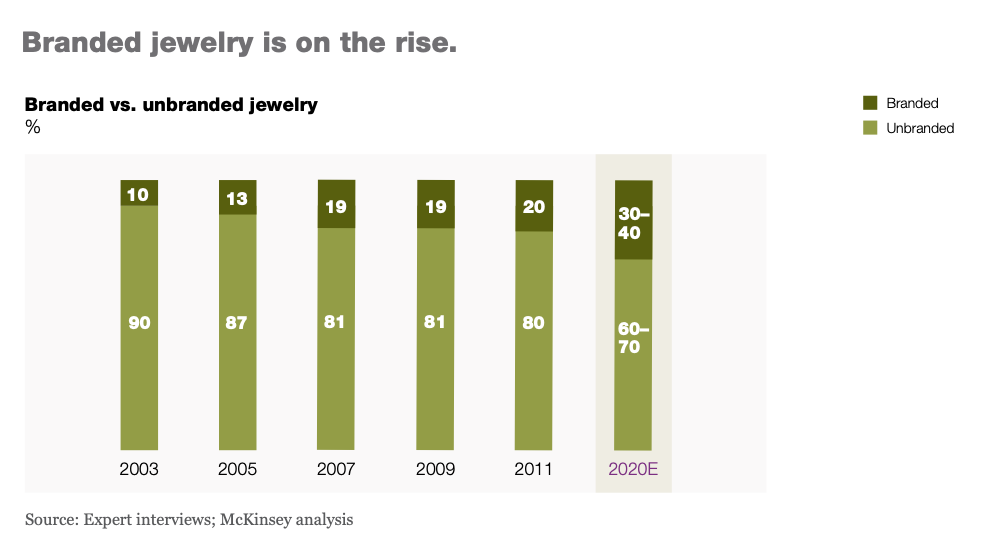The trends that have unfolded in the apparel sector over the last three decades appear to be playing out in the jewelry sector, but at a much faster pace.
By : Linda Dauriz, Nathalie Remy, and Thomas Tochtermann at McKinsey Hamburg
The jewelry industry seems poised for a glittering future. Annual global sales of €148 billion are expected to grow at a healthy clip of 5 to 6 percent each year, totaling €250 billion by 2020. Consumer appetite for jewelry, which was dampened by the global recession, now appears more voracious than ever.
But the industry is as dynamic as it is fast growing. Consequential changes are under way, both in consumer behavior as well as in the industry itself. Jewelry players can’t simply do business as usual and expect to thrive; they must be alert and responsive to important trends and developments or else risk being left behind by more agile competitors.
To chart the most likely course of the jewelry sector, we analyzed publicly available data, studied companies’ annual reports, and interviewed 20 executives at global fine-jewelry and fashion-jewelry companies and industry associations. Our research indicates that five trends that shaped an adjacent industry— apparel—over the past 30 years are becoming evident in the jewelry industry as well, and at a much faster pace:
Internationalization and consolidation
The growth of branded products
A reconfigured channel landscape
“Hybrid” consumption
Fast fashion.
In the complete article, the authors discuss how these trends could affect the future of jewelry and what jewelry companies should do to prepare.
Get the complete report from Mckinsey




